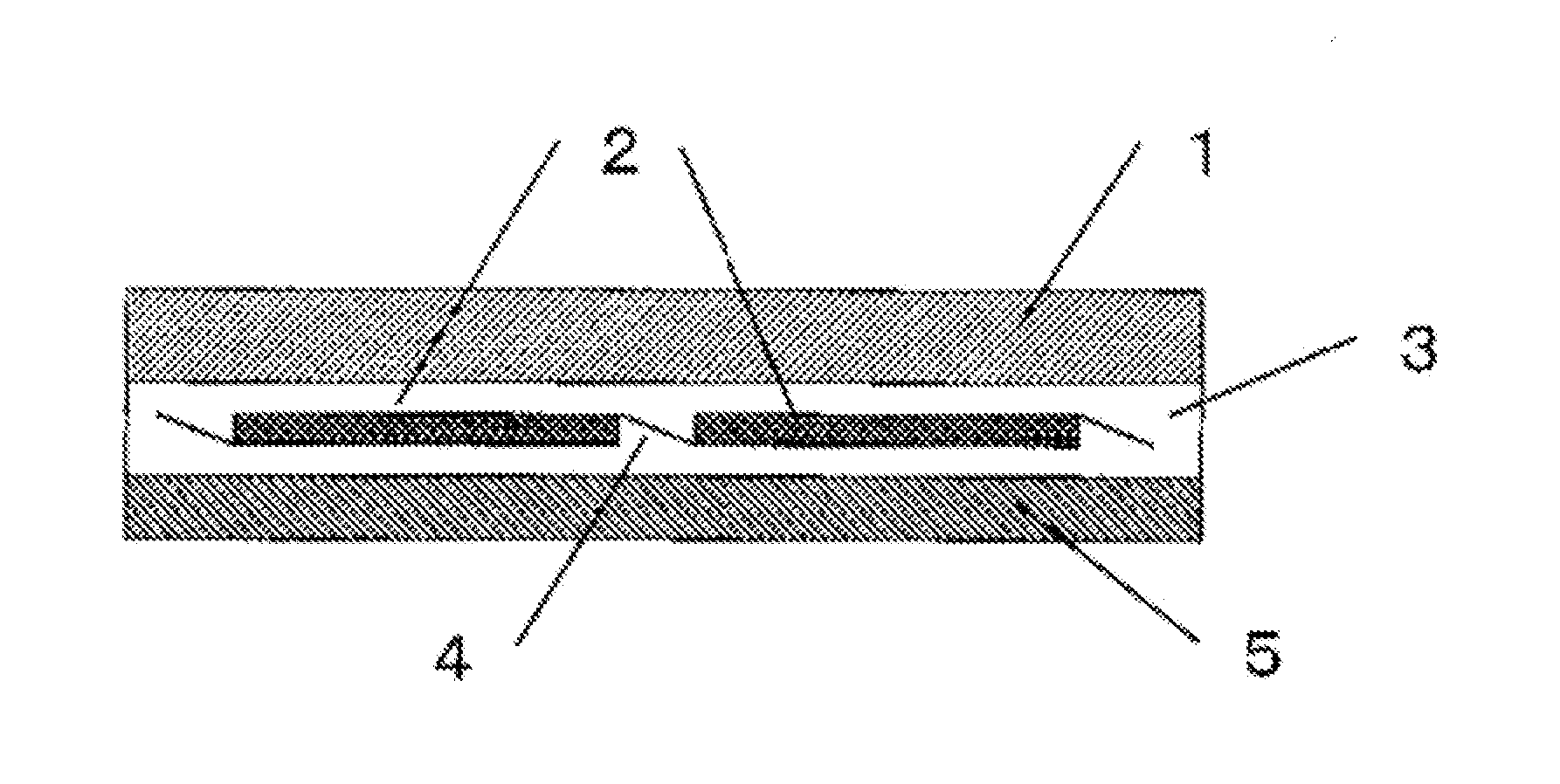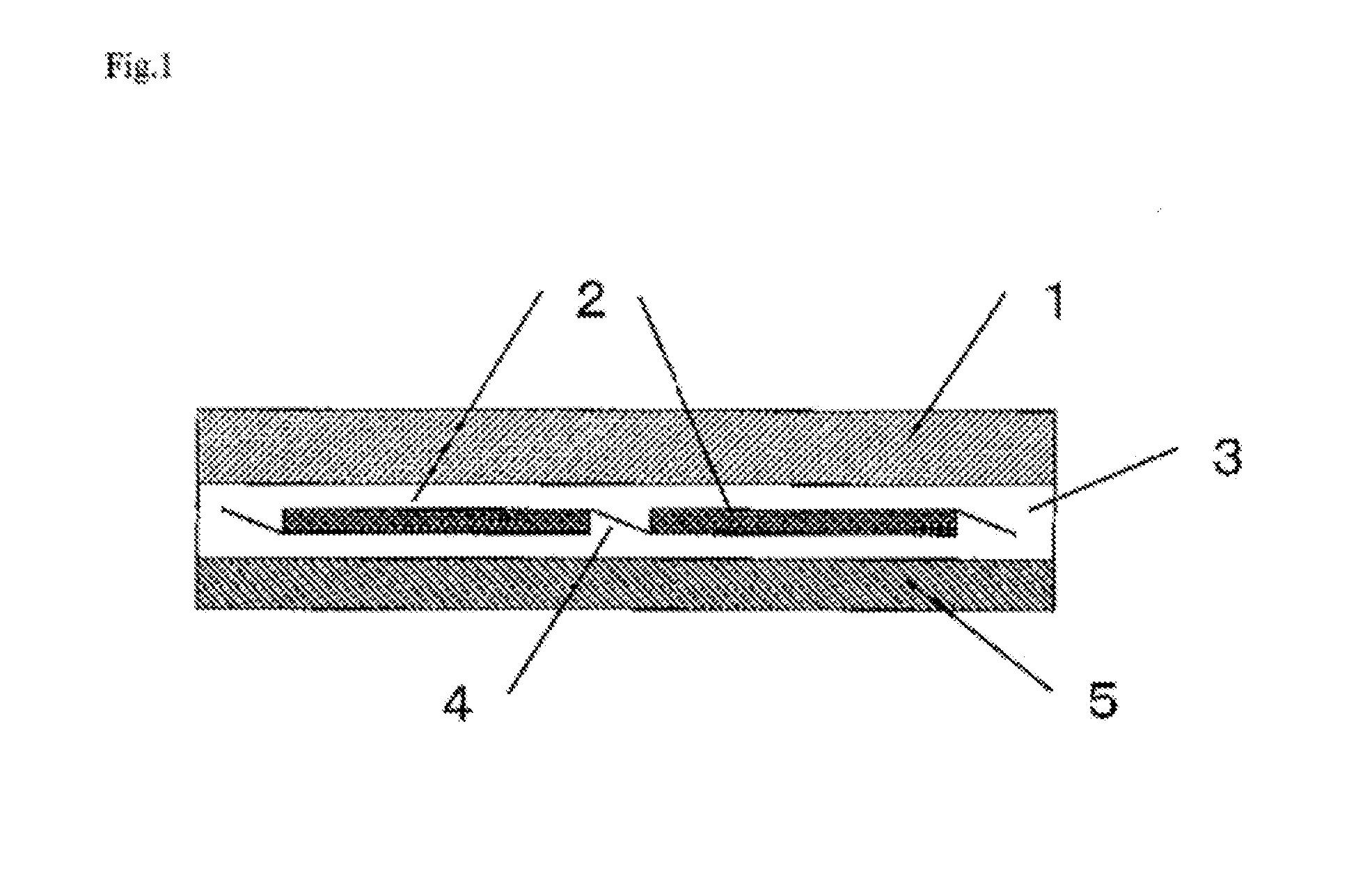Hydrogenated block copolymer having alkoxysilyl group and use therefor
a hydrogenated block and alkoxysilyl group technology, applied in the field of alkoxysilyl groupcontaining hydrogenated block copolymer, can solve the problems of accelerating corrosion of wires or electrodes, reducing the insulating properties of encapsulating materials, etc., to achieve excellent heat resistance, high glass transition temperature, and low glass transition temperature
- Summary
- Abstract
- Description
- Claims
- Application Information
AI Technical Summary
Benefits of technology
Problems solved by technology
Method used
Image
Examples
reference example 1
Synthesis of Hydrogenated Block Copolymer Resin Composition [A2]
[0239]A reactor which was equipped with a stirrer and of which the internal atmosphere had been sufficiently replaced with nitrogen, was charged with 550 parts of dehydrated cyclohexane, 25.0 parts of dehydrated styrene, and 0.475 parts of n-dibutyl ether. 0.68 parts of n-butyllithium (15% cyclohexane solution) was added to the mixture of 60° C. with stirring to initiate polymerization. The mixture was reacted at 60° C. for 60 minutes with stirring. The polymerization conversion rate was then measured by gas chromatography, and found to be 99.5%.
[0240]After the addition of 50.0 parts of dehydrated isoprene, the mixture was stirred for 30 minutes. The polymerization conversion rate was then measured, and found to be about 100%. The reaction was then terminated by adding 0.5 parts of isopropyl alcohol.
[0241]The resulting block copolymer (a) had a weight average molecular weight (Mw) of 61,700 and a molecular weight distri...
reference example 2
Synthesis of Hydrogenated Block Copolymer Resin Composition [B2]
[0249]92 parts of pellets of a hydrogenated block copolymer [B1] were obtained in the same manner as in Reference Example 1, except that 15.0 parts of styrene, 0.50 parts of styrene were sequentially added to the reaction system, and polymerized as the monomers. The resulting hydrogenated block copolymer [B1] had a weight average molecular weight (Mw) of 86,200 and a molecular weight distribution (Mw / Mn) of 1.15. The hydrogenation rate of the hydrogenated block copolymer [B1] was about 100%.
[0250]1.0 part of the hindered amine light stabilizer and 0.05 parts of the benzotriazole UV absorber used in Reference Example 1 were added to 100 parts of the pellets of the hydrogenated block copolymer [B1], and the components were kneaded in the same manner as in Reference Example 1 to obtain 98 parts of pellets of a hydrogenated block copolymer resin composition [B2].
reference example 3
Synthesis of Hydrogenated Block Copolymer Resin Composition [C2]
[0251]90 parts of pellets of a hydrogenated block copolymer [C1] were obtained in the same manner as in Reference Example 1, except that 20.0 parts of styrene, 0.55 parts of n-butyllithium (15% cyclohexane solution), 60.0 parts of isoprene, and 20.0 parts of styrene were sequentially added to the reaction system, and polymerized as the monomers. The resulting hydrogenated block copolymer [C1] had a weight average molecular weight (Mw) of 79,500 and a molecular weight distribution (Mw / Mn) of 1.15. The hydrogenation rate of the hydrogenated block copolymer [C1] was about 100%.
[0252]1.0 part of the hindered amine light stabilizer and 0.05 parts of the benzotriazole UV absorber used in Reference Example 1 were added to 100 parts of the pellets of the hydrogenated block copolymer [C1], and the components were kneaded in the same manner as in Reference Example 1 to obtain 98 parts of a hydrogenated block copolymer resin compo...
PUM
| Property | Measurement | Unit |
|---|---|---|
| melting point | aaaaa | aaaaa |
| encapsulating temperature | aaaaa | aaaaa |
| encapsulating temperature | aaaaa | aaaaa |
Abstract
Description
Claims
Application Information
 Login to View More
Login to View More - R&D
- Intellectual Property
- Life Sciences
- Materials
- Tech Scout
- Unparalleled Data Quality
- Higher Quality Content
- 60% Fewer Hallucinations
Browse by: Latest US Patents, China's latest patents, Technical Efficacy Thesaurus, Application Domain, Technology Topic, Popular Technical Reports.
© 2025 PatSnap. All rights reserved.Legal|Privacy policy|Modern Slavery Act Transparency Statement|Sitemap|About US| Contact US: help@patsnap.com



